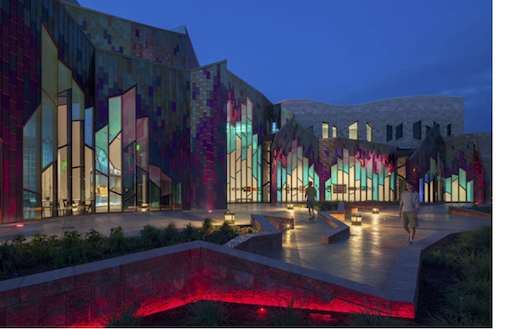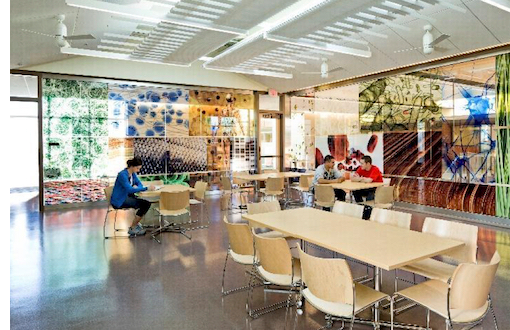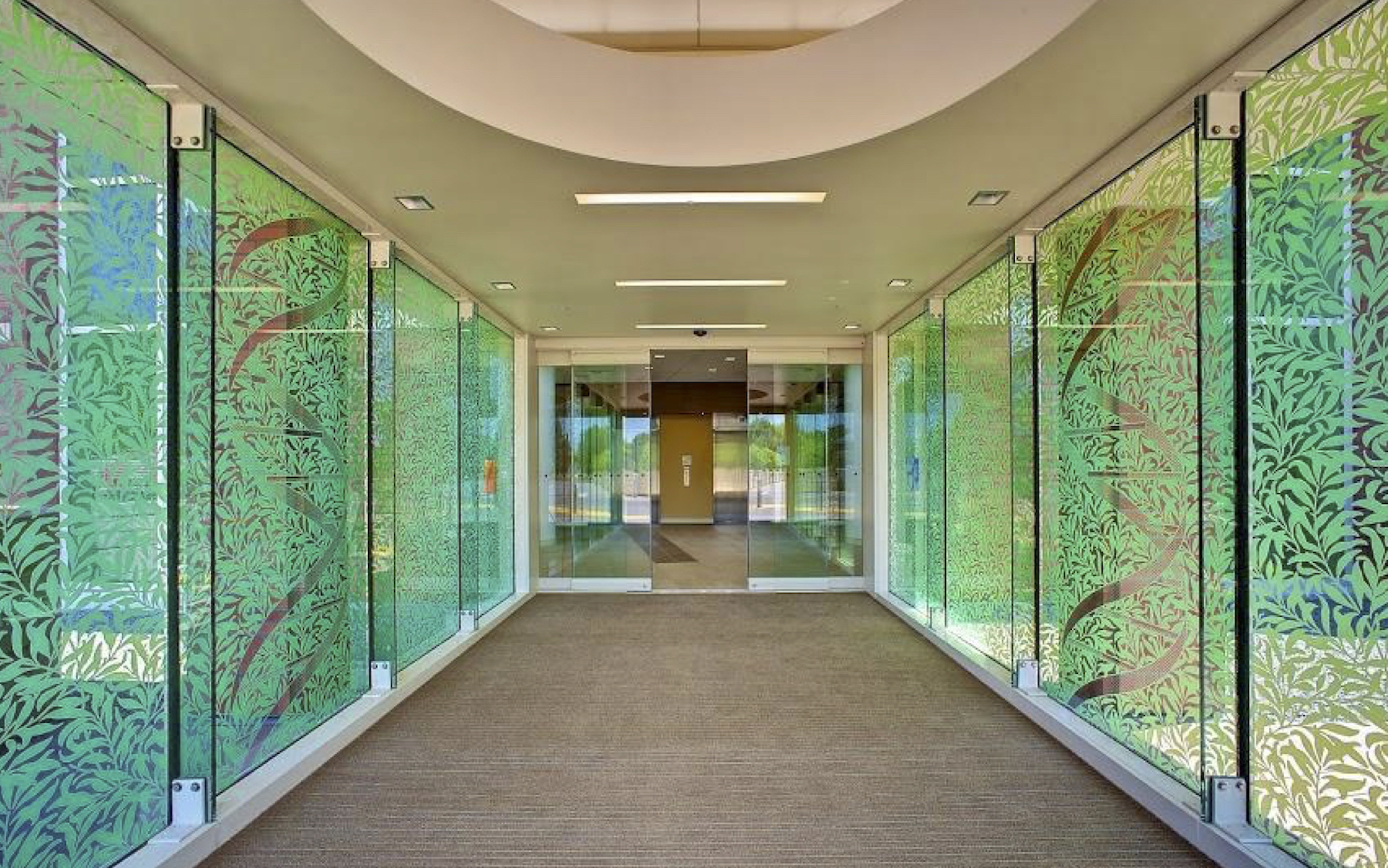In the world of fine art, a master painter begins with canvas selection. A linen canvas is nearly always selected over cotton because nothing delivers the artist’s authentic vision quite like linen.
Similarly, with glass.
While it’s true glass manufacturers have made remarkable strides in recent years across a broad front, including energy efficiency, there remains major divisions in the way glass manufacturers approach clarity and light transmission.
We’re talking, of course, about conventional clear glass and low-iron glass.
Less Green, More Clarity
The metaphor of cotton and linen canvas is apt in glass conversations. As good as today’s conventional “clear” glass is, it falls significantly short of low-iron glass’s highest potential clarity (87 percent less green tint) and generous 91 VLT (visible light transmission) rating.
In fact, there is no industry standard specification criteria for “clear” glass, the clarity of which can vary broadly between batches and manufacturers.
Small wonder low-iron glass is the glass of choice for interiors and exteriors across a wide array of iconic structures, including the Amazon Spheres, Bullitt Center, Fallingwater, Calgary Central Library, UCSD Jacobs Medical Center, among many other projects worldwide.
 Extreme Neutrality as Aesthetic
Extreme Neutrality as Aesthetic
Historically, the purest low-iron glasses have been prized for their ability to step away from the limelight (literally, as it turns out) and showcase daylight and exterior views. “The clarity of the glass allows for it to appear invisible, a feature [Frank Lloyd] Wright admired,” explains Scott W. Perkins, director of preservation and collections for Fallingwater. Wright specified one of the industry’s pioneering low-iron glasses in his original specification for his iconic house.
However, the extreme neutrality of low-iron glass is increasingly in demand for decorative interior design applications. Its minimal green and pure clarity provides a truly neutral substrate for dynamic patterns, colorful designs and more.
Bernard Lax agrees. Lax, founder and head of Pulp Studio, a widely respected fabricator of decorative glass, says his team always specifies low-iron glass “… for projects where the aesthetic is the driving force to maintain color neutrality.”
 Five Decorative Applications
Five Decorative Applications
Low-iron glass is increasingly specified for decorative features, doors and partitions, stairs and handrails, shower and bath enclosures, kitchens and backsplashes, security cases and displays, entrances and storefronts, and anywhere maximum color fidelity enhances artistry. Starphire Ultra-Clear® Glass by Vitro Architectural Glass is the design industry’s de facto low-iron standard, distinguished by its distinctive blue beveled edge and proprietary low-iron formula.
- Dichroic Glass. Dichroic is an effect that creates brilliant color shifts and movement within a single lite of glass. Effects can be enhanced by using textured glass as one or more of the lites or muted with acid-etching. Dichroic glass is known for its chameleon-like effects, where the glass’s transmitted and reflected colors can appear different.
- Digital Ceramic Printing. An image is printed directly on glass. Virtually any full-color design is printable on low-iron glass.
- Acid-Etched Glass. Offers a surface finish that diffuses transmitted light and reduces glare with a frosted appearance, often in a pattern. It is ideal for dividing walls, wall coverings, office partitions, shower and bath enclosures, floors, stairs and railings and doors. Acid-etching also is frequently used to create artistic patterns and in bird-friendly glass, which is increasingly in demand as many municipalities pass legislation requiring bird-friendly building design.
- Ceramic Frit. A permanent, opaque coating that is fired into the glass, it offers pattern art ranging from simple shapes and gradients to intricate designs. Combine ceramic frit with coatings, tints, and reflected glass. Ceramic frit is frequently used in spandrel glass.
- Other Applications. Polished edge glass and laminated glass with tinted or patterned polyvinyl butyral interlayers offer additional decorative options.
When the project calls for a superior canvas of glass for dynamic design ideas, make low-iron glass a primary consideration. Request a sample of patented Starphire Ultra-Clear® Glass and experience the difference for yourself.
Related Stories
| Nov 11, 2010
Saint-Gobain to make $80 million investment in SAGE Electrochromics
Saint-Gobain, one of the world’s largest glass and construction material manufacturers, is making a strategic equity investment in SAGE Electrochromics to make electronically tintable “dynamic glass” an affordable, mass-market product, ushering in a new era of energy-saving buildings.
| Nov 11, 2010
Saint-Gobain to make $80 million investment in SAGE Electrochromics
Saint-Gobain, one of the world’s largest glass and construction material manufacturers, is making a strategic equity investment in SAGE Electrochromics to make electronically tintable “dynamic glass” an affordable, mass-market product, ushering in a new era of energy-saving buildings.
| Nov 3, 2010
First of three green labs opens at Iowa State University
Designed by ZGF Architects, in association with OPN Architects, the Biorenewable Research Laboratory on the Ames campus of Iowa State University is the first of three projects completed as part of the school’s Biorenewables Complex. The 71,800-sf LEED Gold project is one of three wings that will make up the 210,000-sf complex.
| Nov 3, 2010
Public works complex gets eco-friendly addition
The renovation and expansion of the public works operations facility in Wilmette, Ill., including a 5,000-sf addition that houses administrative and engineering offices, locker rooms, and a lunch room/meeting room, is seeking LEED Gold certification.
| Nov 3, 2010
Sailing center sets course for energy efficiency, sustainability
The Milwaukee (Wis.) Community Sailing Center’s new facility on Lake Michigan counts a geothermal heating and cooling system among its sustainable features. The facility was designed for the nonprofit instructional sailing organization with energy efficiency and low operating costs in mind.
| Nov 3, 2010
Rotating atriums give Riyadh’s first Hilton an unusual twist
Goettsch Partners, in collaboration with Omrania & Associates (architect of record) and David Wrenn Interiors (interior designer), is serving as design architect for the five-star, 900-key Hilton Riyadh.
| Nov 3, 2010
Virginia biofuel research center moving along
The Sustainable Energy Technology Center has broken ground in October on the Danville, Va., campus of the Institute for Advanced Learning and Research. The 25,000-sf facility will be used to develop enhanced bio-based fuels, and will house research laboratories, support labs, graduate student research space, and faculty offices. Rainwater harvesting, a vegetated roof, low-VOC and recycled materials, photovoltaic panels, high-efficiency plumbing fixtures and water-saving systems, and LED light fixtures will be deployed. Dewberry served as lead architect, with Lord Aeck & Sargent serving as laboratory designer and sustainability consultant. Perigon Engineering consulted on high-bay process labs. New Atlantic Contracting is building the facility.
| Nov 2, 2010
Cypress Siding Helps Nature Center Look its Part
The Trinity River Audubon Center, which sits within a 6,000-acre forest just outside Dallas, utilizes sustainable materials that help the $12.5 million nature center fit its wooded setting and put it on a path to earning LEED Gold.
| Oct 13, 2010
Prefab Trailblazer
The $137 million, 12-story, 500,000-sf Miami Valley Hospital cardiac center, Dayton, Ohio, is the first major hospital project in the U.S. to have made extensive use of prefabricated components in its design and construction.
| Oct 13, 2010
Hospital tower gets modern makeover
The Wellmont Holston Valley Medical Center in Kingsport, Tenn., expanded its D unit, a project that includes a 243,443-sf addition with a 12-room operating suite, a 36-bed intensive care unit, and an enlarged emergency department.















